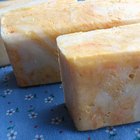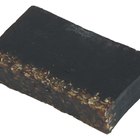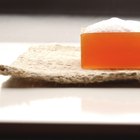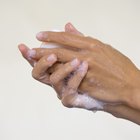
Coal tar is derived from coal. It is the black, liquid byproduct from the distillation process. This black liquid has antiseptic and anti-inflammatory properties that are used to treat a variety of skin conditions. It can be formulated into shampoos, lotions, creams, soaps and ointments. While relatively safe, there are some side effects to note. In addition, there have been concerns that coal tar soap may cause cancer.
Properties
According to both the Mayo Clinic as well as "The Truth About Coal Tar," coal tar soap has moisturizing, anti-inflammatory, antibacterial and anti-parasitic properties. Coal tar is extremely thick and viscous. It has a strong, unpleasant smell. Soaps made from coal tar are black and also have the characteristic smell. According to Eczema.net, it can also stain a variety of materials.
Skin Disease Treatment
According to the Mayo Clinic, dermatologists prescribe coal tar soap to help treat or prevent a variety of skin diseases including psoriasis, eczema, acne, seborrhea dermatitis, scabies and ringworm. The anti-inflammatory properties help relieve the inflammation and itchiness associated with these diseases, and coal tar soap can help slow down rapid skin cell growth seen in seborrheic dermatitis, according to the American Family Physician. Sometimes, coal tar is used after other medications. For example, adherent scale on seborrhea dermatitis may require softening first with oils and then removal by coal tar shampoo. According to the Economic Expert, coal tar soap can also kill and repel head lice.
Carcinogenic Concerns
Controversy exists as to whether the coal tar in coal tar soap can cause cancer. According to DermNetNZ, animals studies have shown increases in skin cancer upon exposure to coal tar, but human studies showed no increased incidence. In addition, the Federal Drug Administration indicates there is no scientific evidence that the low concentrations of coal tar in coal tar soap have carcinogenic properties.
Side Effects
Coal tar soaps do have some side effects, particularly for people with sensitive skin. While often used to treat irritated skin, coal tar soap can actually cause redness and irritation in certain individuals.
The use of coal tar soap can increase an individual's sensitivity to the sun, increasing the risk of sunburn. Caution should be used to avoid sunlight and the use of sunlamps when using coal tar soap. Although coal tar soap washes off easily, and does not leave a residue, according to the Mayo Clinic, the ingredients in coal tar soap remain active within the skin for at least 24 to 72 hours.
Use of Coal Tar Soap
Although coal tar soap is used to treat skin conditions, it should not be used on infected, blistered, raw or oozing areas. When applying the soap directly to the skin, apply enough to wash the affected area well, rub gently, then rinse. Usually, adults will wash the affected area one or two times a day. The soap is usually stored at room temperature, away from heat and direct light. According to the Mayo Clinic, it is important to note that true coal tar-containing soaps contain polycyclic aromatic hydrocarbons, and in most areas, require a prescription.
Related Articles

Does Black Soap Act Against Bacteria?

How Safe Is Lye Soap?

Importance of a Soap Detergent

Difference Between Soap & Synthetic ...

About African Black Soap

The Benefits of Castile Soap

Pine Tar Soap for Psoriasis

Jewelry & Skin Discoloration

What Ingredients Are in Detergent?

How to Heal an Inflamed Bikini Area

Ingredients of Bar Soap

Is Allantoin a Relative of the Lanolin ...

How to Care for the Skin After Laser ...

Neutrogena Ingredients

Ingredients in Hand Soap

How to Fix an Irritated Upper Lip After ...

Palmolive Shampoo Ingredients

What Is Camphor Phenol?

How to Get Liquid Soap Off a Leather ...

How to Remove the Smell of Cologne From ...
References
Resources
Writer Bio
Robin Wasserman has been writing and prosecuting biochemical patents since 1998. She has served as a biochemical patent agent and a research scientist for a gene-therapy company. Wasserman earned her Doctor of Philosophy in biochemistry and molecular biology, graduating from Harvard University in 1995.
Photo Credits
Dirty Old Soap Dish 20080713-1210449 image by SIGNSofMIND from Fotolia.com